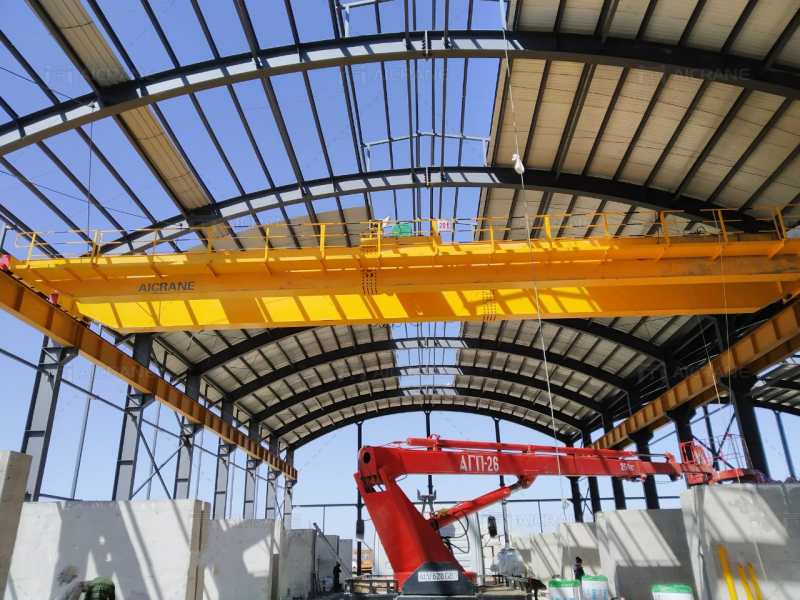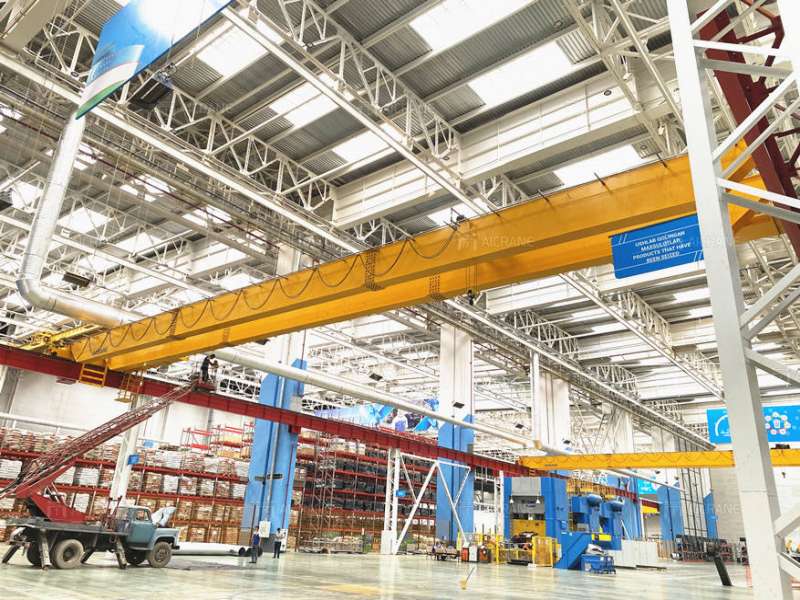In the fast-paced world of industrial operations, efficiency and productivity are the cornerstones of success. Among the various tools and machinery that contribute to these goals, the double girder overhead crane stands out as a pivotal piece of equipment. With advancements in technology, these cranes have evolved to offer unparalleled precision, safety, and productivity. This article explores how advanced double girder overhead crane technology can significantly boost productivity in industrial settings.
Understanding Double Girder Overhead Cranes
Double girder overhead cranes are robust lifting systems designed for handling heavy loads. Unlike single girder cranes, they feature two parallel girders that support the bridge and trolley, allowing for greater load capacity and span. These cranes are commonly used in environments where heavy lifting and precise load handling are critical, such as manufacturing plants, warehouses, and shipyards.

Key Technological Advancements in Double Girder Overhead Cranes
Automated Control Systems
One of the most significant advancements in double girder overhead crane technology is the integration of automated control systems. These systems allow for precise control of the crane’s movements, reducing the margin of error and enhancing operational efficiency. Automated systems can include features like programmable logic controllers (PLCs) and human-machine interfaces (HMIs), enabling operators to input specific commands and monitor the crane’s performance in real-time.
These advancements minimize human error and allow for consistent, repeatable actions, which are essential in industries requiring high levels of precision. Automation also reduces the need for manual intervention, freeing up human resources for other tasks and boosting overall productivity.
Anti-Sway Technology
Traditional overhead cranes often faced challenges with load sway, which could lead to inefficiencies, safety hazards, and damage to materials. Modern double girder industrial overhead cranes now come equipped with anti-sway technology, which stabilizes the load during lifting and transportation. This technology uses sensors and control algorithms to detect and counteract sway, ensuring smooth and safe movement.
By reducing sway, these cranes not only enhance safety but also speed up operations. Loads can be moved more quickly and accurately, leading to faster cycle times and increased throughput, directly contributing to higher productivity levels.

Remote Operation and Monitoring
The ability to operate and monitor cranes remotely is another technological leap that has revolutionized the industry. Advanced double girder overhead cranes can now be controlled from a distance using wireless systems, allowing operators to manage crane operations from a safe and convenient location. Remote monitoring systems provide real-time data on the crane’s performance, including load weight, travel speed, and operational status.
This remote functionality enhances safety by removing operators from potentially hazardous environments and allows for continuous monitoring of the crane’s condition. Predictive maintenance becomes possible, as operators can identify potential issues before they lead to downtime, ensuring that the crane is always ready for use and minimizing disruptions to productivity.
Enhanced Load Management
Advanced load management systems are now integral to double girder overhead cranes. These systems include features like load weighing, overload protection, and precise load positioning. Load weighing systems provide accurate measurements of the weight being lifted, ensuring that the crane operates within safe limits. Overload protection prevents the crane from lifting loads that exceed its capacity, safeguarding both the equipment and the operators.
Precise load positioning technology allows for exact placement of loads, which is particularly beneficial in industries where accuracy is critical. By improving load management, these systems contribute to safer, faster, and more efficient operations, ultimately boosting productivity.
If you are interested in knowing more details about crane systems, you can check Aicrane lifting equipment now and you will get helpful information and may choose a suitable crane solution for your special lifting needs.
Energy Efficiency
Energy efficiency is a growing concern in industrial operations, and modern double girder overhead cranes have responded with energy-saving technologies. Variable frequency drives (VFDs) are commonly used in these cranes to regulate motor speed and torque, optimizing energy use according to the load and operational requirements. This not only reduces energy consumption but also extends the lifespan of the crane’s components by reducing wear and tear.
Energy-efficient cranes lower operational costs, which can be reinvested into other areas of the business. Additionally, reducing energy consumption aligns with sustainability goals, making these cranes an attractive option for companies looking to enhance their environmental credentials.
Customizable Solutions
The ability to customize double girder overhead cranes to meet specific operational needs has been greatly enhanced by advancements in technology. Professional overhead crane manufacturers now offer a range of customizable options, from specialized lifting attachments to tailored control systems. This flexibility allows businesses to invest in cranes that are perfectly suited to their unique requirements, ensuring maximum efficiency and productivity.
Customizable solutions mean that companies no longer need to compromise on their operational needs. Instead, they can design a crane system that optimizes their workflow, reduces bottlenecks, and enhances overall productivity.
The Impact on Productivity
The cumulative effect of these technological advancements is a significant boost in productivity across various industrial sectors. Automated control systems and anti-sway technology reduce the time required for lifting and transporting loads, while remote operation and monitoring ensure continuous, efficient operation. Enhanced load management systems contribute to safer and faster handling of materials, and energy-efficient designs lower operational costs, allowing for reinvestment in productivity-enhancing technologies.
Moreover, customizable solutions mean that companies can tailor their crane systems to perfectly match their operational needs, further optimizing workflow and increasing output. The result is a more streamlined, efficient, and productive operation that can handle higher volumes of work with greater precision and safety.
Conclusion
In today’s competitive industrial landscape, staying ahead requires investment in the latest technologies. Advanced double girder overhead crane technology offers a powerful tool for boosting productivity, enhancing safety, and reducing operational costs. By integrating automated control systems, anti-sway technology, remote operation, enhanced load management, energy efficiency, and customization options, these cranes provide a comprehensive solution for modern industrial needs. Investing in such technology is not just about improving current operations but also about future-proofing your business for continued success.